Intro to Occlusion Exam 1 [Dental Occlusion: Marshall]
1/27
There's no tags or description
Looks like no tags are added yet.
Name | Mastery | Learn | Test | Matching | Spaced |
|---|
No study sessions yet.
28 Terms
Define primary tasks of dental occlusion in modern Homo Sapiens
Food intake: Biting/cutting
Mastication: Food crushing
Ensuring the minimal distance between mandible and maxilla necessary for optimum functioning of the masseter and medial pterygoid muscles
Ensuring the vertical dimension between upper and lower jaw
Speech articulation: Particularly anterior teeth
Jaw clenching and tooth grinding
Tool and weapon
Occlusion
The static relationship between the incising or masticating surfaces of the maxillary or mandibular teeth or tooth analogues
Occlusal contact
Any contact relationship of opposing (maxillary and mandibular) teeth
Articulation
The static and dynamic relationship between the occlusal surfaces of the teeth during function
Jaw function involves complex mandibular movement mediated by
muscles and nerves
Static occlusion was defined and classified by
Edward H. Angle
Today we use Angle's classification scheme to classify
static occlusion and malocclusion
The Angle Classification Method
Line of Occlusion
The alignment of the occluding surfaces of the teeth as viewed in the horizontal plane

Line of Occlusion: Maxillary arch
The central fossae of the molars and premolars
The lingual fossa of the canines and incisors
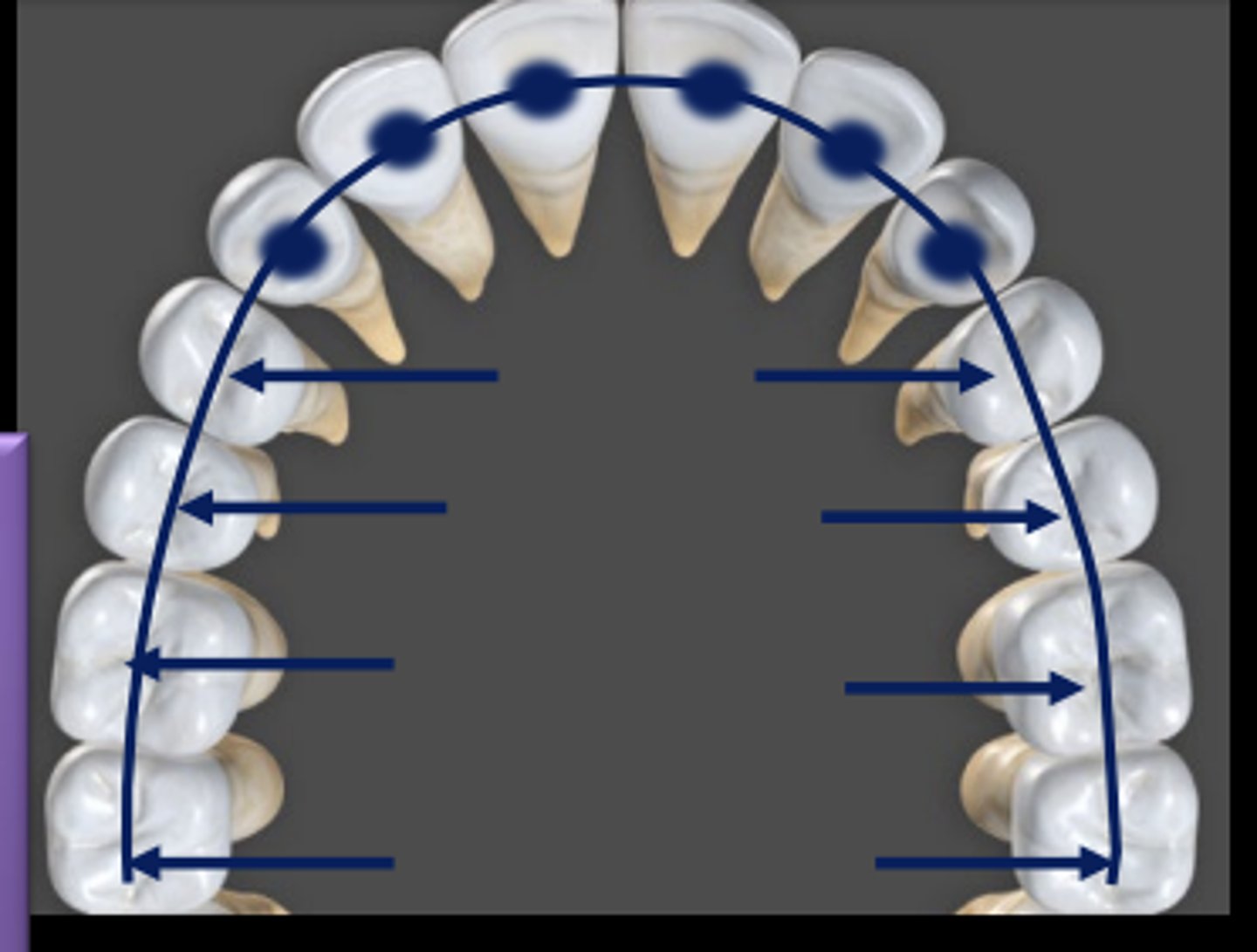
Line of occlusion: Mandibular arch
The buccal cusps of the molars and premolars
The cusps of the canines and incisal edges of the incisors
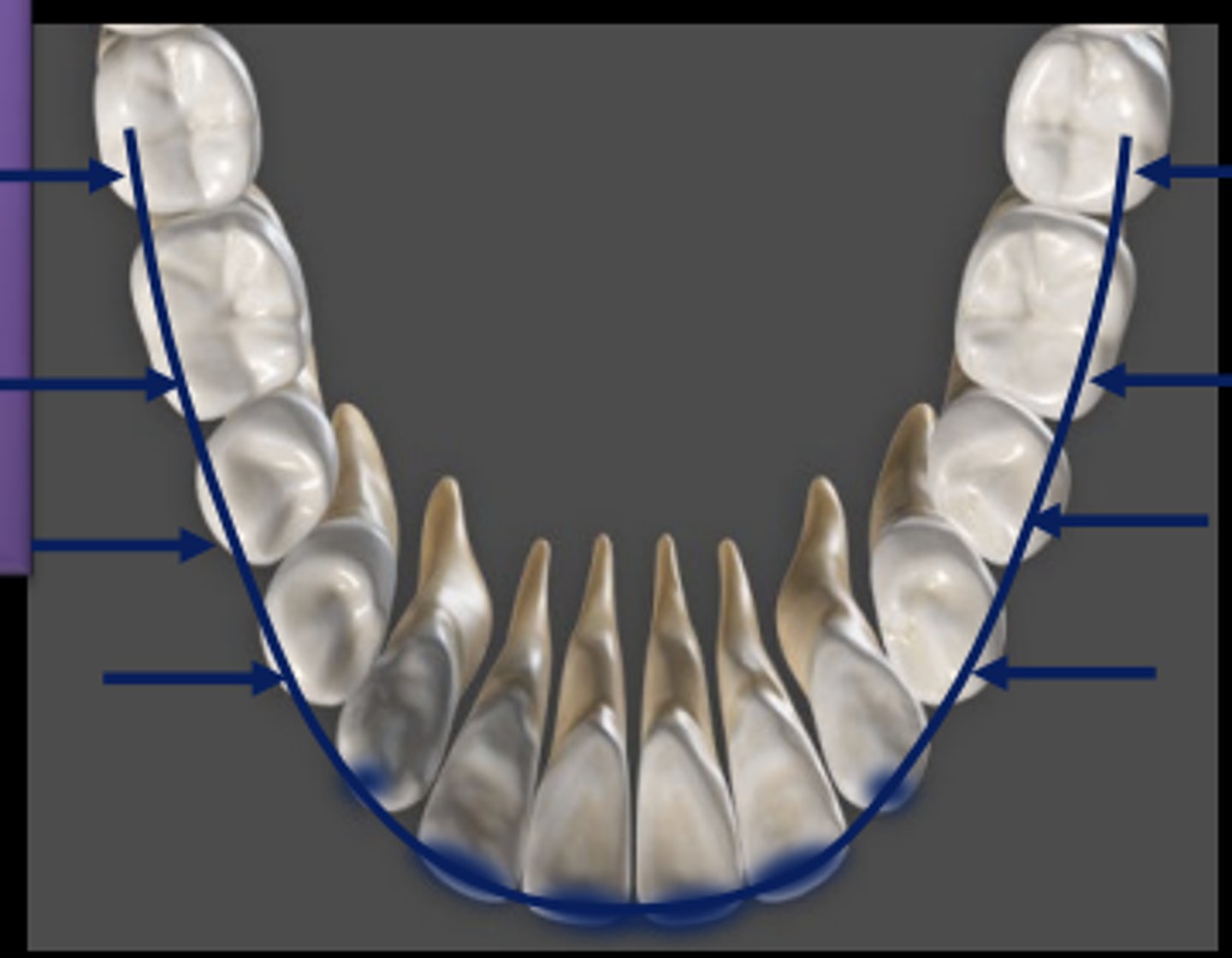
Describe the essential elements of Angle's "normal occlusion"
Meso-lingual cusp of maxillary 1st molar with central fossa of mandibular 1st molar
Mesio-buccal cusp of maxillary 1st molar aligned with buccal groove of mandibular 1st molar.
Both definitions are on slides
The angle classification method is based on the antero-posterior relationship of the permanent 1st molars viewed from the
buccal aspect
Definition of Class 1 molar occlusion
Mesio-buccal cusp of maxillary 1st molar aligned with buccal groove of mandibular 1st molar. This 1st molar occlusal relationship is the determinant of Class I normal occlusion and Class I malocclusion
Class I molar occlusion
Anything in the green is chillin though
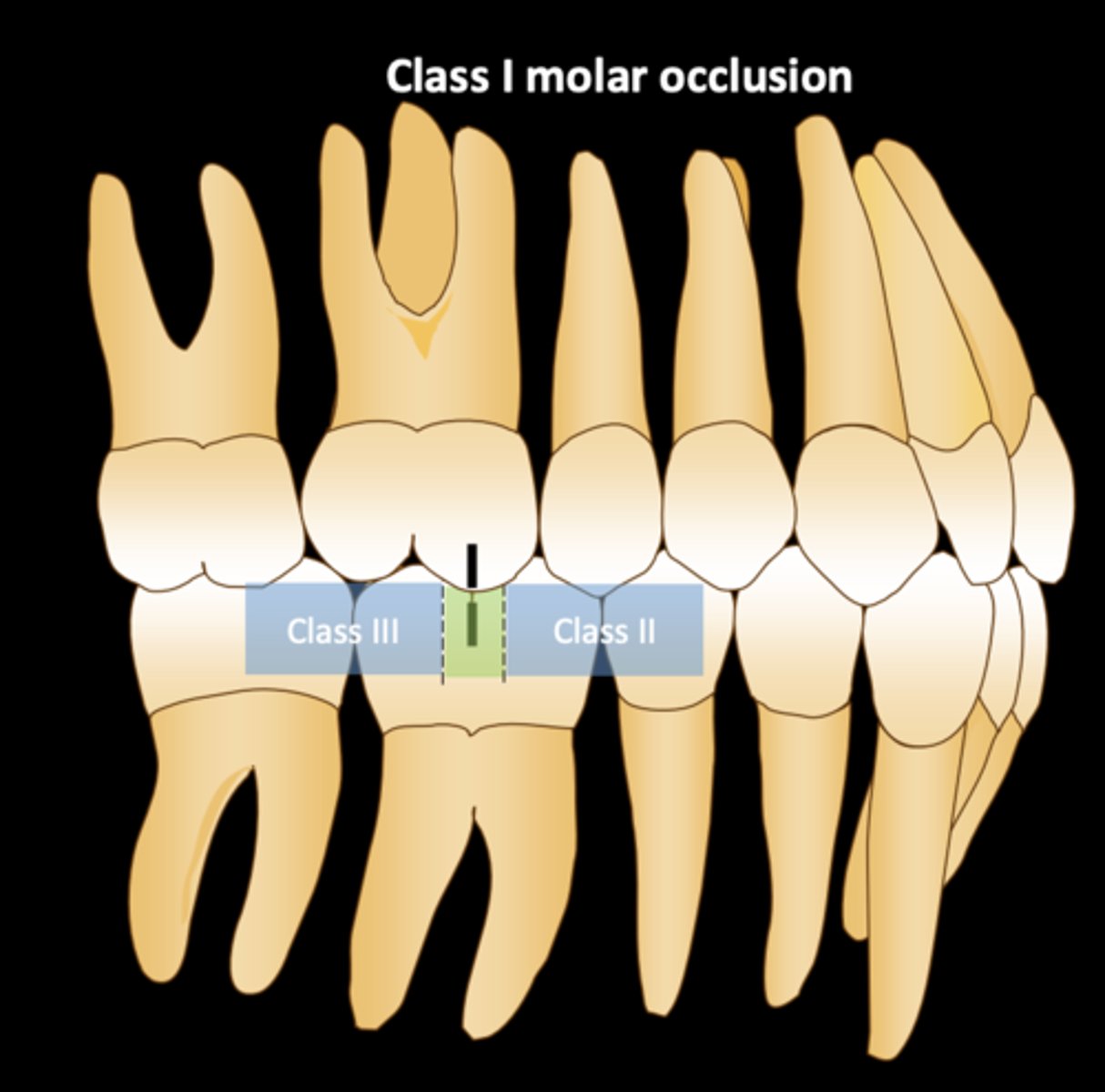
Class III molar occlusion

Class II molar occlusion
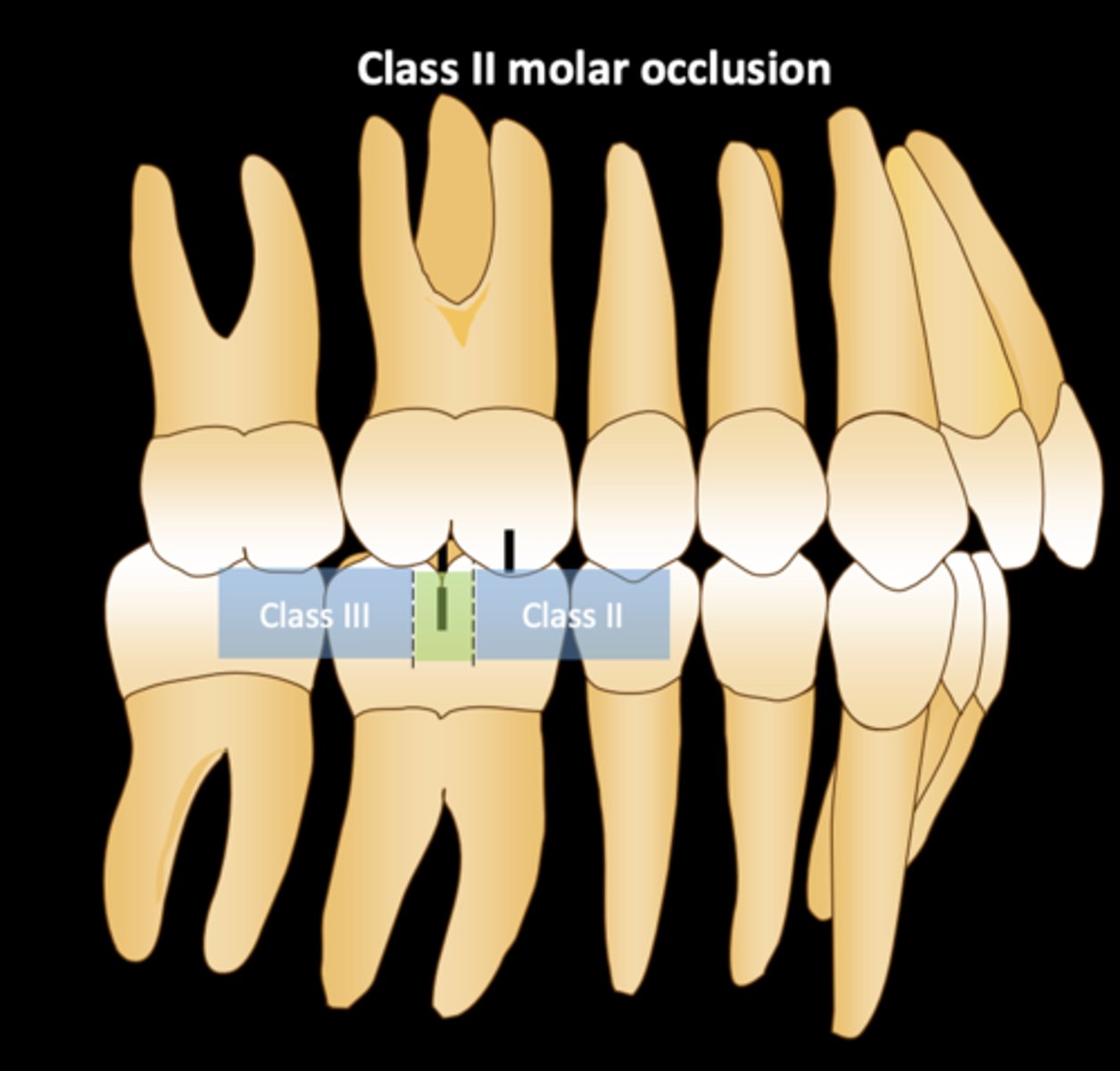
When ideal contacts exist in a static relationship we have
normal occlusion
When ideal contacts do not exist in a static relationship we have a
malocclusion
Malocclusion
deviation from normal occlusion
Angle classified malocclusion as a
static relationship lacking ideal occlusal contacts which can occur with class I molar relationship and does not occur in Class II and Class II molar relationships
Angle Class I malocclusion
- Class I molar occlusion
- Any maxillary incisor inclination
- Any amount of central incisor overject

Angle Class II Division 1 Malocclusion
- Class II molar occlusion
- Central incisor proclined
- Increased central incisor overjet

Angle Class II Division 2 Malocclusion
- Class II Molar occlusion
- Central incisor retroclined
- Later incisors may be proclined or retroclined
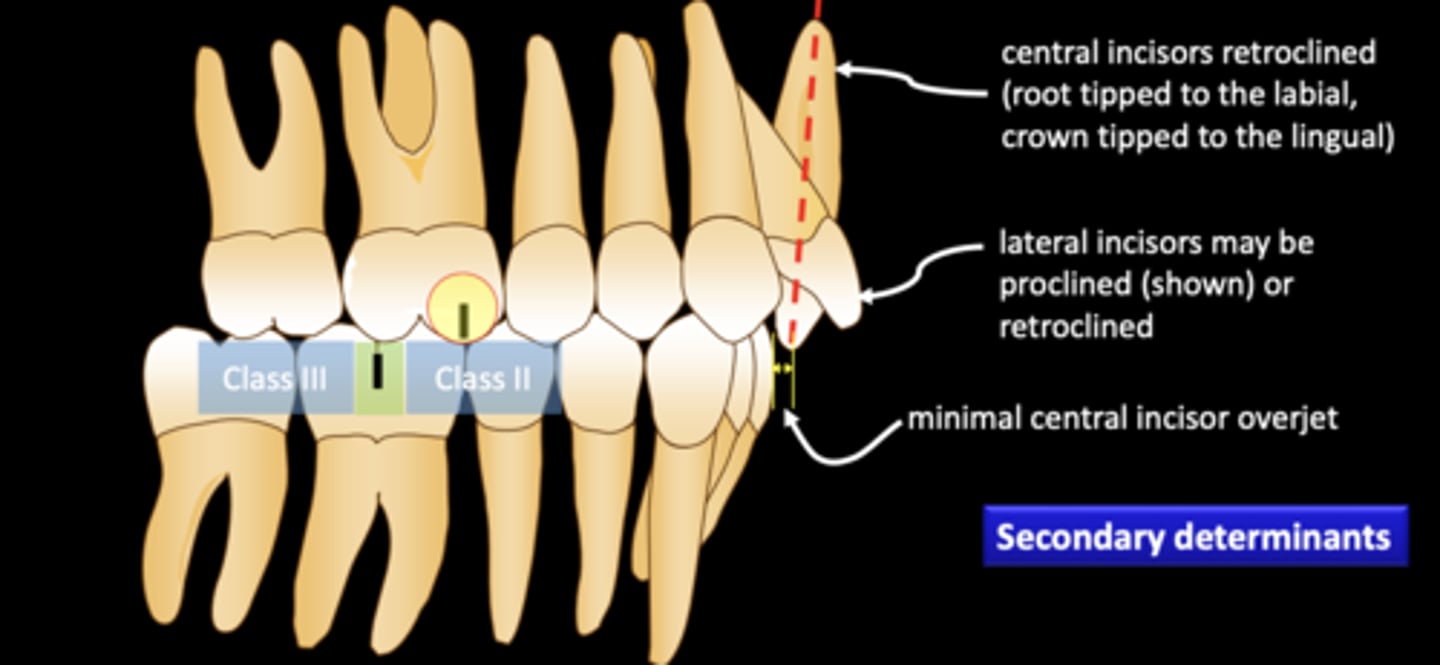
Angle Class III Malocclusion
- Class III molar occlusion
- Any maxillary incisor inclination
- Any amount of central incisor overject
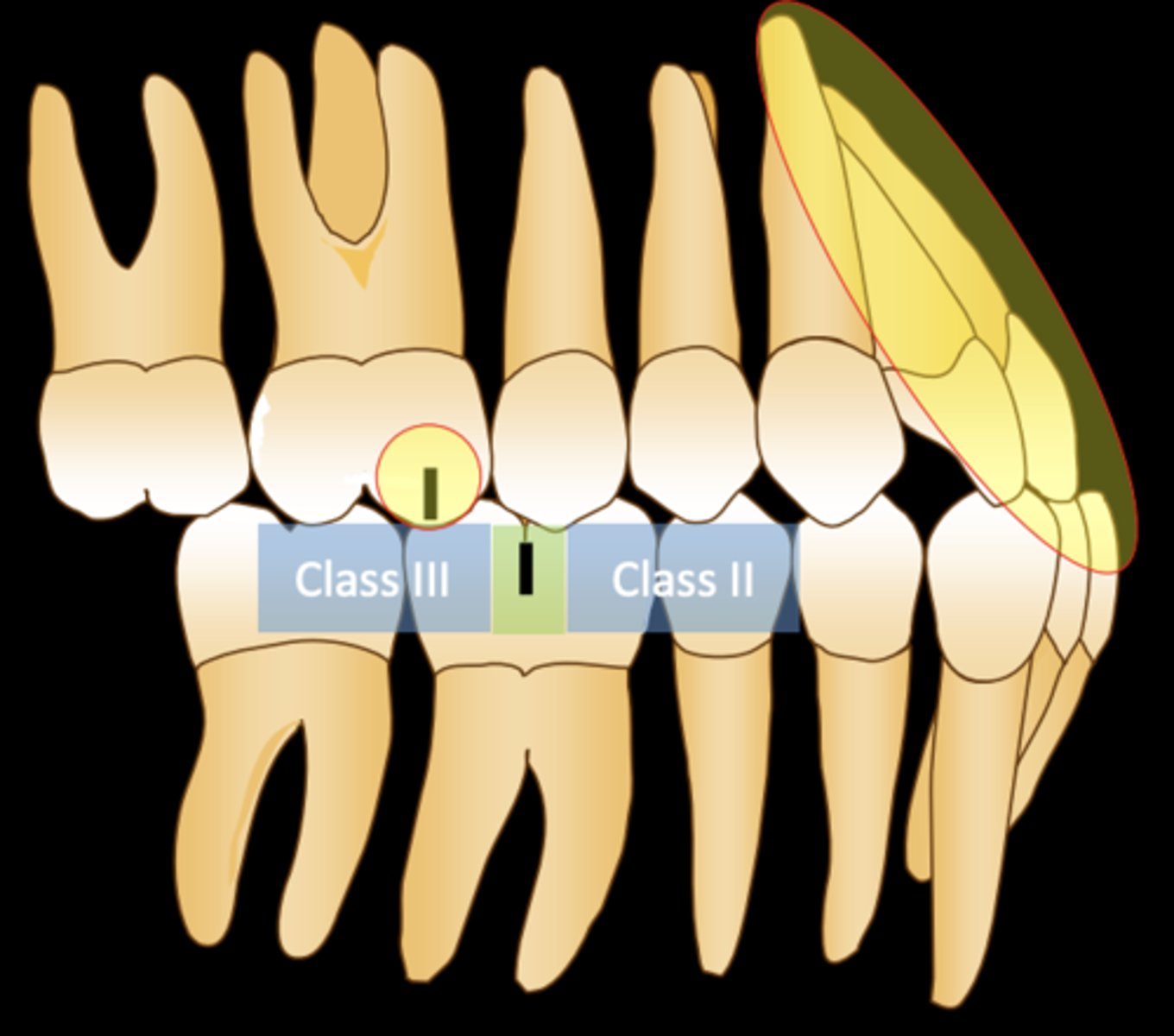
Go to timestamp 38:43 on the panapto
Trust me
Incisor overbite
Vertical relationship between the incisal edge of the maxillary central incisor and the incisal edge of the mandibular central incisors
- Given in a percent (Amount of the surface of the mandibular incisor crown that is covered by the maxillary incisor crown)
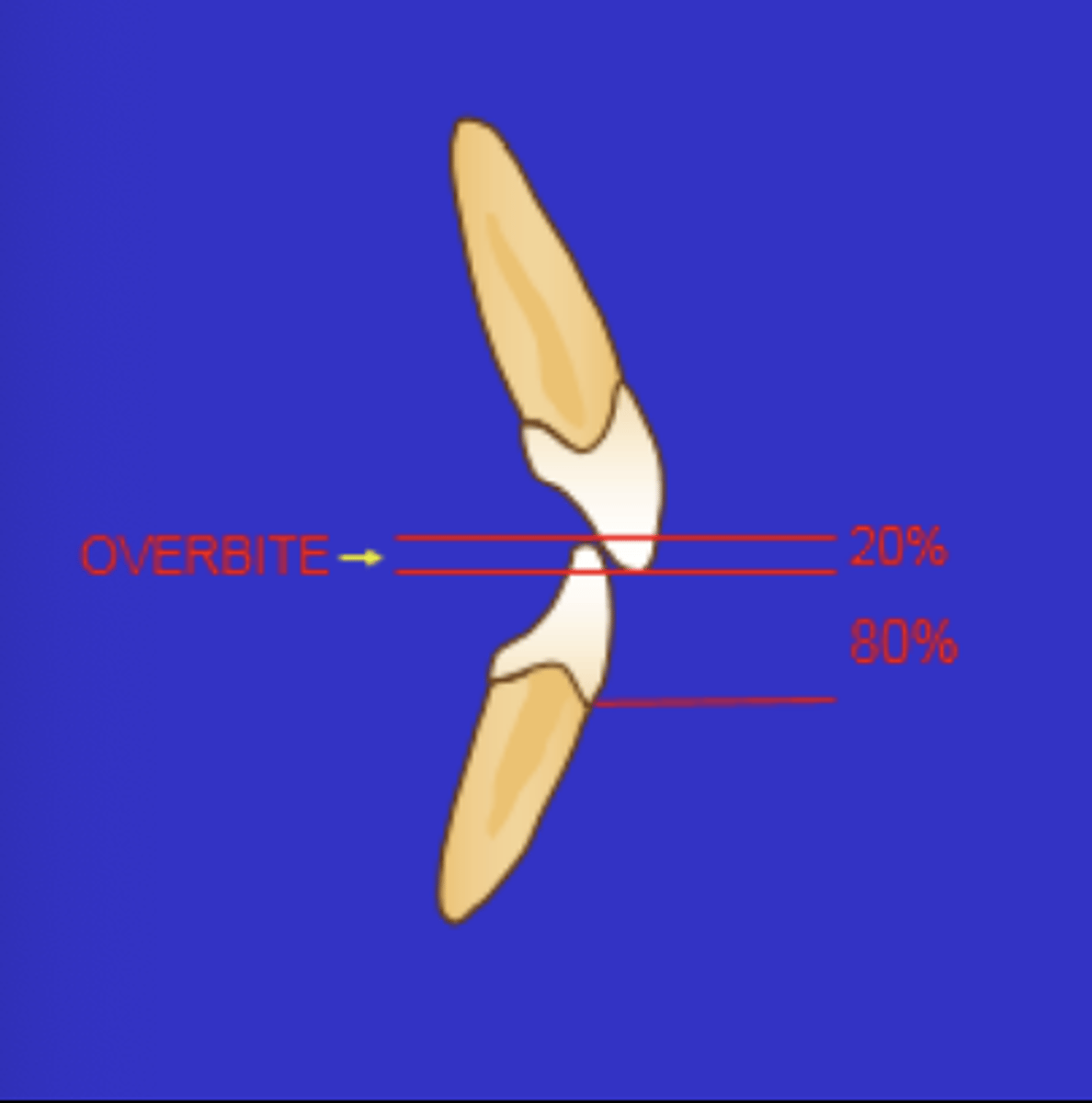
Deep vs Open overbite
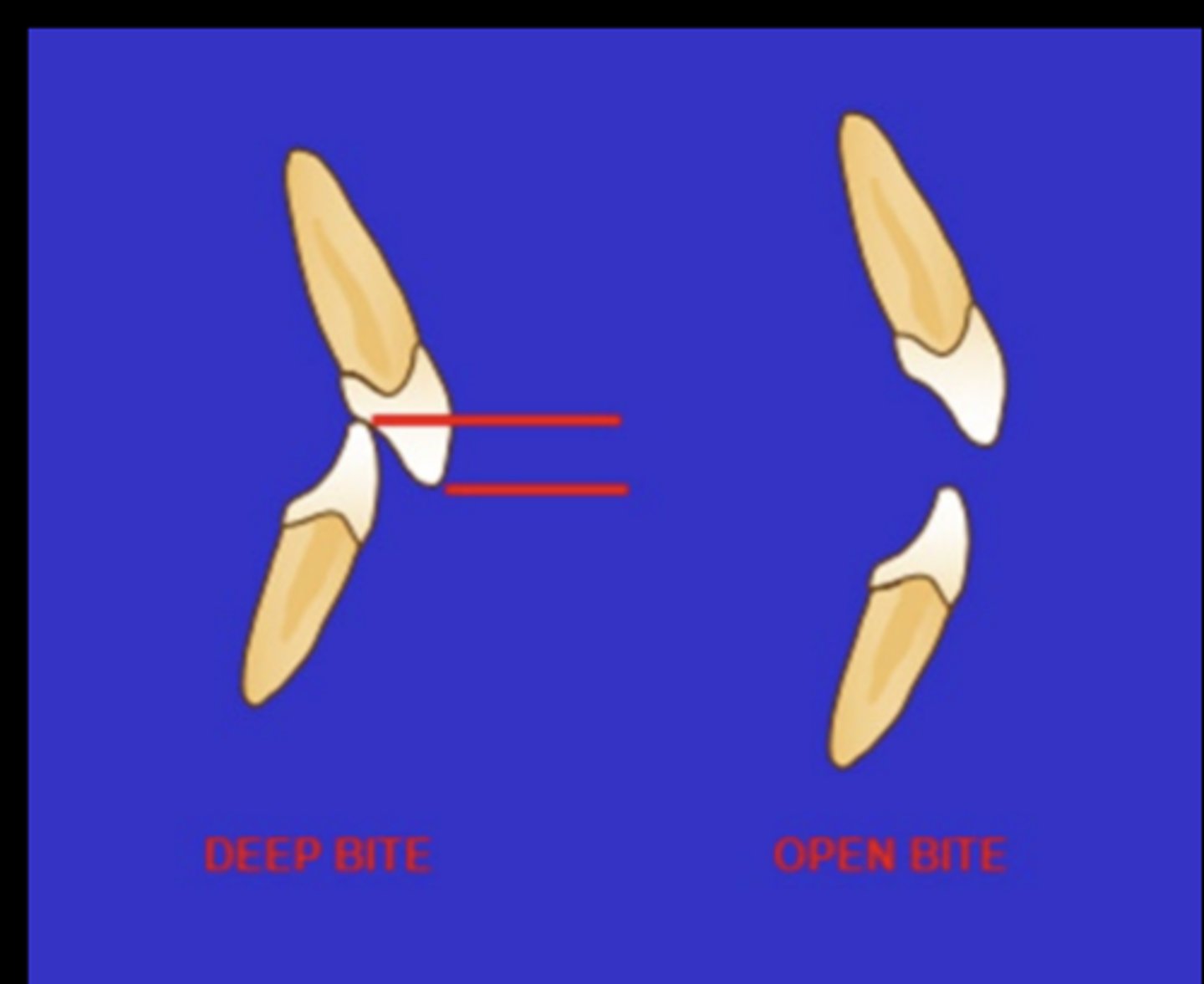
Overjet
The horizontal overlap between the facial surface of the mandibular central incisor and the incisal edge of the maxillary permanent central incisor, measured along the occlusal plane
